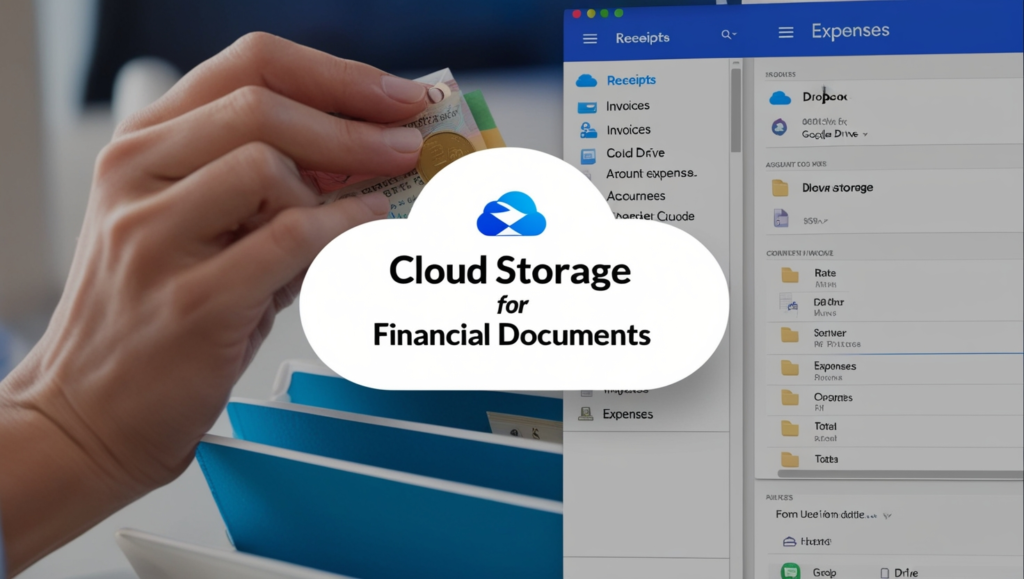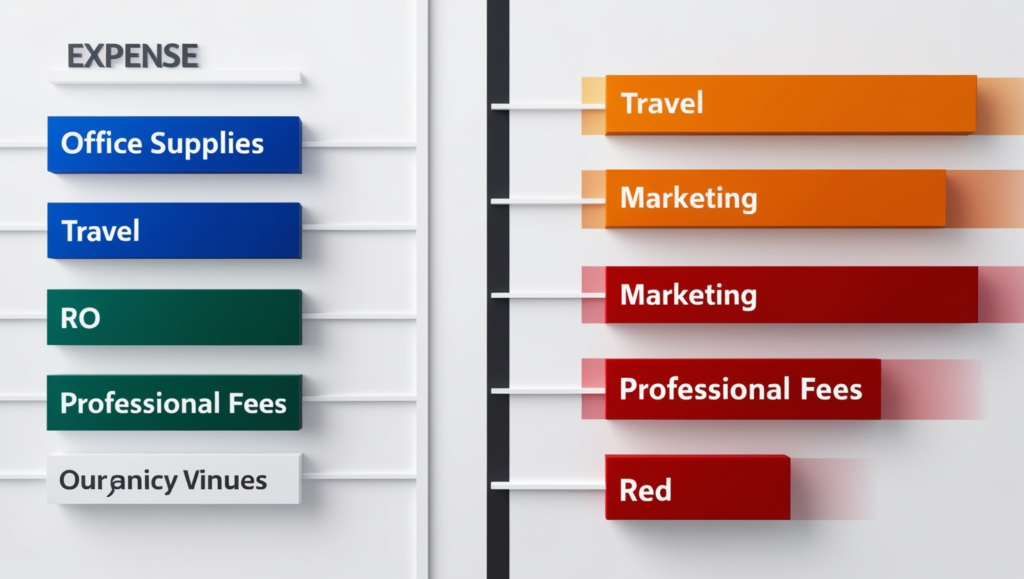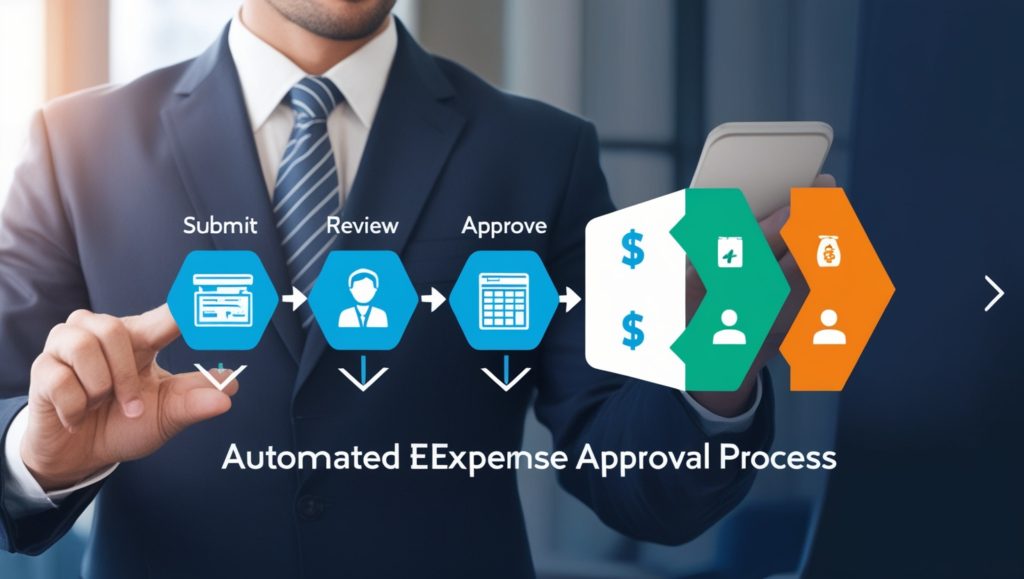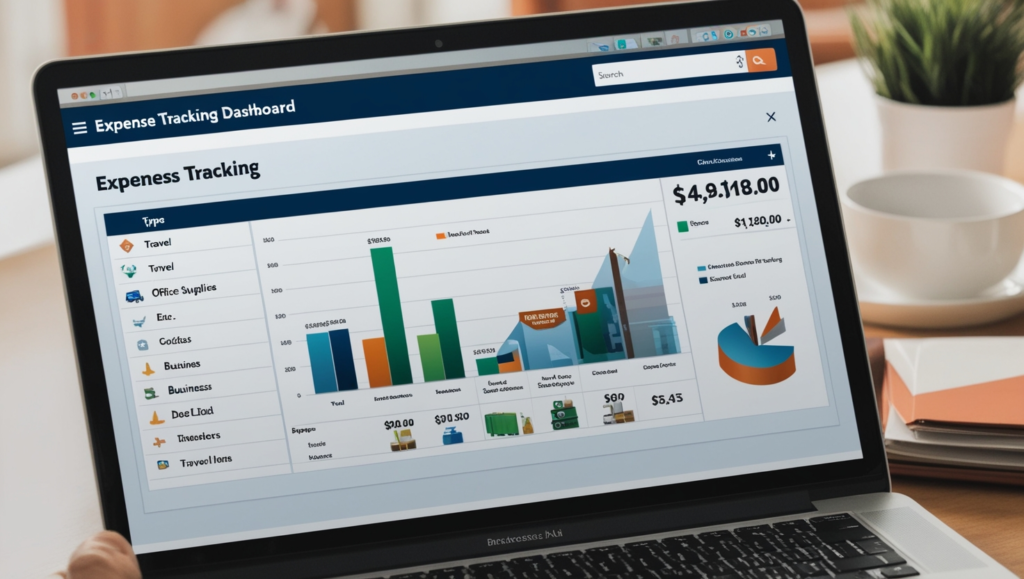Efficient expense tracking is a cornerstone of successful business management. It’s not just about keeping records—it’s about leveraging those records to maximize profitability, reduce risks, and make informed decisions. When every dollar spent is meticulously documented, businesses can unlock valuable tax benefits, monitor spending patterns, and improve financial performance.
Choosing the right tools is key to streamlining this process. From dedicated expense management platforms like Expensify and Zoho Expense to comprehensive accounting software like QuickBooks and Xero, technology can automate tasks and reduce manual errors. Organized receipts and invoices further simplify record-keeping, ensuring easy access and compliance during audits.
However, even the best tools can’t fix inconsistent habits. Common pitfalls—like losing receipts, misclassifying expenses, or delaying updates—can lead to missed deductions or financial mismanagement. That’s where automation steps in, offering solutions like automatic receipt capture and seamless integration with accounting systems.
Aligning expense tracking practices with your financial goals and regularly reviewing your system for improvements, you can create an efficient framework that supports growth. Whether you’re a small business owner or a corporate manager, mastering expense tracking isn’t just good practice—it’s a strategic advantage for long-term success.
Why Detailed Expense Records Matter
Tracking business expenses may seem like an administrative chore, but it plays a vital role in ensuring your business thrives. Effective expense management goes beyond just meeting legal requirements. It can help reduce your tax burden, improve financial decision-making, boost overall business performance, and prepare you for audits. By maintaining accurate and organized records, you can turn this task into a powerful tool for growth and success.
Maximize Tax Benefits
One of the most compelling reasons to track every dollar spent is to maximize tax benefits. Proper documentation allows businesses to claim legitimate deductions, reducing the overall tax burden. Common deductible expenses include office supplies, travel costs, and professional fees. Without meticulous records, you risk missing out on these opportunities. By keeping clear and organized receipts, invoices, and statements, you ensure compliance with tax regulations. This practice not only saves money but also provides peace of mind during tax season.
Improve Financial Decision-Making
Accurate expense tracking gives you insights into your business’s spending patterns. With this data, you can identify areas for cost-cutting and allocate resources more effectively. For instance, if you notice rising travel expenses, you can explore alternatives like virtual meetings. Regularly monitoring expenses against budgets helps you make informed, data-driven decisions. This process enables you to avoid overspending and align your financial practices with your business goals.
Enhance Business Performance and Streamline Audits
Well-maintained expense records are crucial for evaluating your business’s financial health. They help you compare actual spending to budgeted amounts, making it easier to spot inefficiencies and adjust accordingly. Additionally, thorough records simplify the audit process. Whether it’s an internal review or an official audit, having organized and accessible documentation reduces stress and ensures accuracy. This preparation demonstrates professionalism and compliance, strengthening your business’s credibility.

Tools and Software for Efficient Tracking
Efficient expense tracking is vital for maintaining financial health in any business. While managing receipts and invoices manually can be time-consuming and prone to errors, modern tools and software provide efficient solutions. From capturing receipts to automating categorization and reporting, these tools streamline processes and save valuable time. Below, we explore some of the best expense management and accounting software options, detailing their features and benefits for businesses of all sizes.
Expense Management Software: Zoho Expense
Zoho Expense is a robust platform designed to simplify expense tracking for businesses of all sizes. It offers features like automatic expense categorization, receipt scanning, and seamless integration with Zoho’s suite of applications and other popular accounting tools. Users can quickly capture receipts using their mobile devices and have expenses categorized automatically, saving time and reducing manual effort. Additionally, Zoho Expense enables businesses to set up approval workflows and generate detailed expense reports. This tool is particularly useful for small and medium-sized businesses seeking an affordable, user-friendly solution. For more information, visit Zoho Expense.
Expense Management Software: Expensify
Expensify stands out for its intuitive interface and mobile-friendly design, making it an excellent choice for businesses that require on-the-go expense tracking. With Expensify, users can take photos of receipts, which are automatically scanned and matched to corresponding transactions. The platform also simplifies expense report creation and reimbursement processes, allowing employees to submit reports easily and managers to approve them quickly. Its focus on user experience makes Expensify a popular option among small and medium-sized businesses. Learn more at Expensify.
Expense Management Software: SAP Concur
For larger enterprises with more complex financial workflows, SAP Concur offers advanced solutions. This platform goes beyond basic expense tracking, providing features like policy compliance monitoring, real-time analytics, and integration with travel management tools. Businesses can use SAP Concur to ensure employees adhere to company spending policies, track expenses in real time, and generate custom analytics reports for better decision-making. While it may be more expensive than other tools, its comprehensive features make it a top choice for large organizations. Explore more at SAP Concur.
Accounting Software: QuickBooks
QuickBooks is a versatile accounting platform that includes robust expense tracking capabilities. Businesses can use QuickBooks to manage everything from categorizing expenses to generating invoices and financial reports. Its user-friendly interface and automation features, such as bank transaction imports and expense matching, simplify day-to-day financial management. QuickBooks also supports integration with numerous third-party tools, making it a flexible option for businesses of all sizes. It’s particularly popular among small businesses and startups. Visit QuickBooks for more details.
Accounting Software: Xero
Xero is a cloud-based accounting tool that excels at automating tasks like expense categorization and reconciliation. Users can upload receipts, which are then automatically matched to transactions. Xero’s cloud-based nature allows for real-time collaboration between business owners and their accountants, providing greater transparency and efficiency. Additionally, its integration with numerous business apps makes it a scalable option for growing companies. Xero is an excellent choice for businesses that want a modern, automated approach to accounting. Learn more at Xero.
Whether you’re a small business owner looking for simplicity or a large enterprise needing advanced analytics, there’s an expense tracking tool for every need. Platforms like Zoho Expense and Expensify cater to small and medium-sized businesses, offering user-friendly features at competitive prices. Larger organizations benefit from the comprehensive capabilities of SAP Concur. Accounting tools like QuickBooks and Xero bridge the gap, providing both expense tracking and broader financial management. Choosing the right software depends on your business size, industry, and specific needs. Investing in these tools ensures efficient expense tracking, better financial decision-making, and long-term success. For additional guidance, explore resources like Best Expense Tracking Software 2024 to find the perfect fit for your business.

Organizing Receipts and Invoices
Effective organization is essential for efficient expense tracking. Without a proper system in place, businesses can lose important documents, miss tax deductions, or struggle during audits. By adopting modern tools and proven methods, you can create a seamless organization process that saves time and ensures accuracy. Below are practical strategies to keep your business expense records well-organized and accessible.
Embrace Digital Storage
Switching to digital storage is a game-changer for organizing receipts and invoices. Instead of holding on to paper receipts that can fade or get lost, scan or photograph them and save them electronically. Digital copies are easier to manage and retrieve when needed. Mobile apps like Adobe Scan and Genius Scan simplify this process, allowing you to scan documents directly from your smartphone. Many expense tracking tools, such as Expensify, offer automatic receipt capture, categorization, and secure storage options. Storing your documents digitally reduces clutter and ensures you always have a backup.
Leverage Cloud-Based Solutions
Cloud-based storage services like Google Drive and Dropbox offer unmatched convenience for organizing and accessing expense records. These platforms allow you to save files securely and retrieve them from anywhere with an internet connection. Organize your documents into clearly labeled folders to simplify navigation. For example, you can create folders by year, expense type, or project. Cloud storage also allows for easy collaboration, making it ideal for sharing records with team members or accountants. By leveraging cloud technology, businesses can eliminate the risks associated with physical storage while ensuring records remain safe and accessible.
Create a Structured Filing System
A well-structured filing system is critical for maintaining order in your expense tracking process. Categorize expenses in a way that makes sense for your business, such as by date, type (e.g., travel, utilities), or project. Use descriptive folder names and maintain consistency across your files to avoid confusion. If you’re using both physical and digital storage, ensure the systems mirror each other to simplify cross-referencing. Regularly review and update your filing structure to adapt to changes in your business needs. A clear, organized system helps you retrieve records quickly, especially during tax preparation or audits.
By implementing these tips, you can streamline your expense organization and avoid common pitfalls. Embracing digital tools, using cloud storage, and maintaining a structured filing system will save time and improve accuracy. For more guidance on expense tracking, explore resources like Small Business Administration’s Expense Tracking Tips.

Common Mistakes and How to Avoid Them
Effective expense tracking is vital for maintaining financial accuracy and preparing for tax season. However, many businesses struggle with common pitfalls that disrupt their financial records and cause unnecessary stress. By addressing these issues—such as inconsistent record-keeping, missing receipts, incorrect categorization, and delayed tracking—you can streamline your process and ensure a healthier financial system. Below are practical solutions to these common challenges.
Maintain Consistent Record-Keeping
Inconsistent record-keeping is one of the most frequent issues businesses face. A haphazard approach—tracking expenses only when convenient—leads to incomplete records and missed details. To avoid this, establish a routine. Whether you choose to update records daily, weekly, or monthly, consistency is key. For example, set a weekly schedule to review receipts and update your expense tracking software. Using tools like QuickBooks or Xero can automate parts of the process, ensuring records are consistently updated without manual effort. Consistency not only saves time but also ensures accuracy when analyzing expenses or preparing for tax filings.
Avoid Missing Receipts
Receipts are essential for verifying expenses, especially during audits or when claiming tax deductions. Many businesses lose out on deductions because they fail to keep receipts for small purchases. To solve this, digitize your receipts immediately after a transaction. Apps like Expensify or Zoho Expense allow you to scan and store receipts securely. Additionally, create a habit of requesting and saving receipts for every purchase, no matter how minor. Digital storage not only prevents loss but also simplifies record retrieval when needed.
Categorize Expenses Correctly
Incorrect expense categorization can cause issues in financial analysis and tax preparation. Misclassified expenses might lead to missed deductions or inaccuracies in your financial statements. To address this, familiarize yourself with common expense categories such as travel, utilities, and professional services. Many expense management tools include features that automatically categorize expenses, reducing manual errors. Ensure you review these classifications regularly to confirm they align with your business’s financial reporting needs. For detailed guidance on categorization, refer to resources like the IRS Expense Guidelines.
Track Expenses Promptly
Delaying expense tracking can lead to forgotten details and lost receipts, disrupting your financial records. Procrastination makes it harder to reconcile transactions and verify accuracy. To avoid this, track expenses as soon as they occur. Mobile apps and cloud-based platforms, such as Google Drive for receipt storage or Wave for free accounting software, make it easy to update records on the go. Prompt tracking not only ensures accuracy but also reduces the time spent catching up on missed entries.Addressing these common issues, businesses can establish a more efficient and reliable expense tracking system. Consistency, proper receipt management, accurate categorization, and timely updates are all essential for maintaining financial accuracy and reducing stress during audits or tax season. Explore tools and resources like Expensify or Zoho Expense to simplify your expense tracking process further.

The Power of Automation
Automation has revolutionized expense tracking, making it faster, more accurate, and less labor-intensive. By leveraging modern tools and technologies, businesses can streamline processes such as receipt management, data entry, and report approvals. Below are three key techniques—automated receipt capture, integration with accounting software, and workflow automation—that simplify expense tracking and improve overall efficiency.
Automate Receipt Capture
Manual receipt tracking is prone to errors and inefficiencies. Automated receipt capture eliminates these challenges by allowing users to scan and categorize receipts instantly. Mobile apps like Expensify and Zoho Expense can extract key details such as merchant name, date, and amount directly from a photo of the receipt. These tools use artificial intelligence to categorize expenses, reducing the need for manual input. By adopting automated receipt capture, businesses save time, minimize human error, and ensure receipts are securely stored for future reference.
Integrate Expense Tools with Accounting Software
Seamless integration between expense tracking tools and accounting software ensures accurate data transfer without duplication. Popular accounting platforms like QuickBooks and Xero allow users to link their expense management apps directly, enabling automatic synchronization of transactions. This integration reduces the risk of discrepancies and ensures that financial records remain up to date. For example, expenses logged in Zoho Expense or Expensify can instantly reflect in the company’s financial reports. Such connectivity not only saves time but also provides real-time insights into cash flow and budgets.
Streamline Approvals with Workflow Automation
Workflow automation optimizes the expense reporting and reimbursement process. Instead of relying on time-consuming manual approvals, businesses can implement automated workflows to route expense reports to the appropriate approvers. Tools like SAP Concur allow businesses to set predefined rules for expense policy compliance and approval hierarchies. This ensures reports move efficiently through the system while flagging policy violations for review. Automated workflows reduce processing time, improve transparency, and ensure timely reimbursements for employees. For more information on how automation can benefit your business, explore resources like PCMag’s Best Expense Tracking Tools.

Expense Categories for Tax Purposes
Categorizing expenses correctly is essential for maximizing tax deductions and maintaining accurate financial records. Proper categorization not only ensures compliance with tax laws but also simplifies financial analysis and audits. Below are common expense categories for tax purposes, including travel, vehicle, office, professional fees, and marketing expenses. Each category is vital for understanding business costs and optimizing tax filings.
Travel Expenses
Travel expenses encompass costs related to business trips. These include airfare, lodging, meals, and local transportation like taxis or rental cars. For example, if an employee travels to a conference, the airfare, hotel stay, and per diem meal costs are all deductible. To ensure accurate reporting, keep detailed records of each trip, including receipts and itineraries. Tools like SAP Concur can simplify the tracking and categorization of travel expenses. Note that the IRS has specific rules for deducting meal expenses, typically allowing only 50% of the total cost. Staying compliant with these regulations is crucial to avoiding audit issues.
Vehicle Expenses
For businesses that rely on vehicles, expenses such as fuel, insurance, maintenance, and depreciation are deductible. Companies can choose between the standard mileage rate or actual expense method for calculating vehicle deductions. The standard mileage rate is a simplified option that accounts for fuel and wear-and-tear costs, while the actual expense method requires detailed tracking of all vehicle-related costs. Apps like MileIQ help businesses log trips and calculate mileage deductions accurately. Maintaining a mileage log and storing receipts for vehicle expenses ensures compliance and maximizes deductions.
Office Expenses
Office expenses cover costs related to maintaining a workspace. Rent, utilities, office supplies, and equipment purchases fall into this category. For home-based businesses, a portion of home-related expenses like electricity and internet bills may also qualify as deductions under the home office deduction rules. To claim these deductions, ensure your office space is used exclusively for business purposes. Tools like QuickBooks can help allocate and track these costs efficiently. Maintaining clear records of lease agreements and utility bills simplifies the process during tax season.
Professional Fees
Legal, accounting, and consulting fees are essential for many businesses and are fully deductible as professional fees. These services are critical for navigating legal requirements, managing finances, and planning strategies. For instance, hiring an accountant to prepare your taxes or a consultant to develop a marketing strategy qualifies as deductible expenses. Keep detailed invoices and payment records for all professional services. Resources like Nolo provide additional guidance on handling legal and accounting needs, ensuring these costs are accurately documented.
Marketing and Advertising Expenses
Marketing and advertising expenses are vital for promoting your business and attracting customers. Common costs include print materials, online ads, and promotional items like branded merchandise. Expenses for social media campaigns, website design, and search engine optimization (SEO) services also fall into this category. Tracking these expenses is essential for understanding your return on investment (ROI) and maximizing tax benefits. Tools like HubSpot offer marketing analytics and expense tracking features, simplifying this process. Retain receipts and contracts related to advertising campaigns to substantiate these deductions.For more detailed guidance, consult the IRS’s Publication 535 on Business Expenses to ensure compliance and maximize your deductions.

Legal Requirements for Expense Records
Expense tracking is not just a financial habit; it’s a legal and strategic necessity. Businesses must comply with regional and industry-specific regulations for maintaining expense records, making consultation with tax professionals or legal advisors essential. Beyond compliance, an efficient expense tracking system plays a key role in achieving financial goals by offering insights into spending patterns, budgeting, and cash flow. Below are essential steps to align expense tracking with financial objectives while adhering to legal standards.
Complying with Legal Requirements
Legal requirements for expense records differ by region and industry. In some jurisdictions, businesses must retain receipts and invoices for a specific number of years, while other regions may have stricter requirements regarding digital record formats. For instance, in the United States, the IRS typically requires records to be kept for at least three years but may demand longer retention for certain cases. Failing to meet these requirements can lead to fines, penalties, or complications during audits. Tools like Zoho Books help businesses securely store and organize expense records, ensuring legal compliance. For region-specific advice, consulting with a tax professional or legal expert is invaluable.
Setting Clear Financial Goals
To align expense tracking with financial objectives, businesses should begin by setting clear, measurable financial goals. Using the SMART framework—Specific, Measurable, Achievable, Relevant, and Time-bound—can clarify priorities. For example, a business aiming to reduce operational costs by 10% within six months can use detailed expense records to identify overspending areas. Clear goals enable businesses to focus their expense tracking efforts, ensuring that spending aligns with overall financial strategies. Regularly revisiting these goals ensures they remain relevant as business needs evolve.
Monitoring Key Financial Metrics
Tracking key metrics such as revenue, profit margin, and cash flow provides actionable insights into a company’s financial health. Expense tracking tools like QuickBooks can generate detailed reports that highlight spending patterns and their impact on these metrics. For instance, analyzing profit margins alongside operational expenses can reveal inefficiencies that need correction. By integrating expense tracking systems with broader financial dashboards, businesses can monitor these metrics in real-time, ensuring informed decision-making and timely interventions.
Regularly Reviewing and Adjusting Expenses
A proactive approach to reviewing expenses can uncover areas for cost savings or reallocation. Regular audits of expense records help identify recurring expenditures that may no longer be necessary or areas where spending exceeds budgetary limits. For example, a business may discover excessive spending on subscriptions or vendor contracts that are underutilized. Periodic reviews also provide opportunities to renegotiate supplier terms or explore cost-effective alternatives. Adjusting expense strategies based on these reviews ensures resources are allocated optimally, supporting the business’s financial goals.
Adapting Strategies for Long-Term Success
Expense tracking systems should be dynamic, evolving to meet changing business environments and financial objectives. As businesses grow, they may need to implement more sophisticated tracking tools or adopt automated workflows for efficiency. For instance, using platforms like SAP Concur can streamline processes such as expense approvals and reimbursements. Regular training for staff on updated expense tracking protocols ensures consistency and compliance. By aligning expense tracking with long-term goals and adapting strategies as needed, businesses can build a solid financial foundation.
Maintaining compliance with legal requirements and aligning expense tracking with financial goals are critical for sustained success. With proper tools, regular reviews, and clear objectives, businesses can streamline operations, reduce costs, and achieve their financial aspirations. For detailed compliance guidelines, consult resources like the IRS Recordkeeping Guide.
Reconciling Expenses with Bank and Credit Card Statements
Reconciliation is an essential financial practice for ensuring accuracy in your expense records and detecting discrepancies. It helps maintain transparency in your finances, strengthens trust with stakeholders, and safeguards against potential errors or fraud. By systematically comparing your expense records with bank and credit card statements, you can identify inconsistencies and address them promptly. Below is a clear process to streamline reconciliation and maintain the integrity of your financial data.
Comparing Statements with Records
The first step in reconciliation involves carefully reviewing your bank and credit card statements against your expense records. Ensure that every transaction listed in the statement is accurately recorded in your tracking system. This process helps verify that no payments have been missed and ensures that recorded expenses match your actual financial activity. Tools like QuickBooks or Xero can automate parts of this process, flagging mismatches for closer examination. Regular reconciliation, conducted monthly or biweekly, minimizes the risk of overlooked discrepancies and keeps records up to date.
Identifying and Investigating Discrepancies
Once statements are compared, any mismatched or missing items must be thoroughly investigated. Common discrepancies include duplicate entries, omitted transactions, or incorrect amounts. For example, if your records show a lower expense for a vendor payment than your bank statement, you need to cross-check invoices or receipts. It is equally crucial to investigate unauthorized charges promptly to protect against fraud. Platforms like Plaid can provide real-time transaction monitoring, which aids in quick detection of errors.
Correcting Errors and Preventing Recurrence
The final step in reconciliation is correcting any identified errors. Update your expense records to reflect the accurate amounts or contact your financial institution if unauthorized charges or banking errors are detected. Consistent documentation of adjustments ensures transparency and prepares you for future audits. For long-term success, adopt best practices such as maintaining digital records of receipts, using automated reconciliation tools, and training your team in accurate expense tracking. Implementing these strategies minimizes errors and simplifies reconciliation over time.
Regular reconciliation is a cornerstone of financial accuracy and accountability. By comparing records, investigating discrepancies, and correcting errors, businesses can maintain financial health and reduce risks. For detailed guidance on financial reconciliation processes, consult resources like the American Institute of CPAs.
Staying Efficient: Regular Review and Updates
Maintaining an efficient expense tracking system is not a one-time task; it requires regular reviews and updates to keep it effective and aligned with your needs. By assessing your current processes, adopting new tools, and ensuring proper training, you can build a system that minimizes errors, saves time, and supports financial accuracy. Staying organized is equally vital, as it prevents unnecessary confusion and ensures smooth operations. Below are actionable steps to optimize and sustain your expense tracking system.
Evaluate Current Systems and Identify Gaps
Start by assessing your current expense tracking system. Review its performance in terms of accuracy, usability, and integration with other financial tools. Identify areas that cause delays or errors, such as outdated manual processes or gaps in automation. For example, if receipt processing takes too long, consider implementing tools that automate scanning and categorization, like Expensify. Regularly auditing your system ensures you identify bottlenecks and adjust before they impact your financial reporting.
Embrace New Tools and Technology
Technology evolves rapidly, and expense tracking tools are no exception. Stay updated on innovative software solutions that could improve your processes. For instance, cloud-based platforms like Zoho Expense offer advanced features such as receipt capture, real-time reporting, and seamless integration with accounting tools. Automated solutions reduce the risk of human error and save valuable time. Research the features and user feedback of different tools to find ones that align with your business needs.
Provide Comprehensive Training
Even the most sophisticated tools can fall short without proper user adoption. Ensure that your team is thoroughly trained in the expense tracking process and familiar with the tools being used. Provide clear instructions, regular updates, and refresher training sessions to keep everyone on the same page. Additionally, set clear guidelines for submitting expenses, categorizing costs, and storing receipts. Training sessions not only improve efficiency but also enhance accountability among team members.
Stay Organized with Structured Processes
Organization is the backbone of efficient expense tracking. Establish a structured system for filing receipts, categorizing expenses, and reconciling records. Digital solutions such as Dropbox or Google Drive can simplify document storage and make files accessible anytime. Avoid clutter by discarding duplicate or outdated records and maintaining a clear hierarchy in your folders. A clean and organized system reduces errors, speeds up audits, and makes it easier to spot inconsistencies.
By regularly evaluating your system, leveraging modern tools, training your team, and maintaining organization, you can create an efficient expense tracking process that evolves with your business. For additional resources on streamlining financial management, visit Business News Daily.
